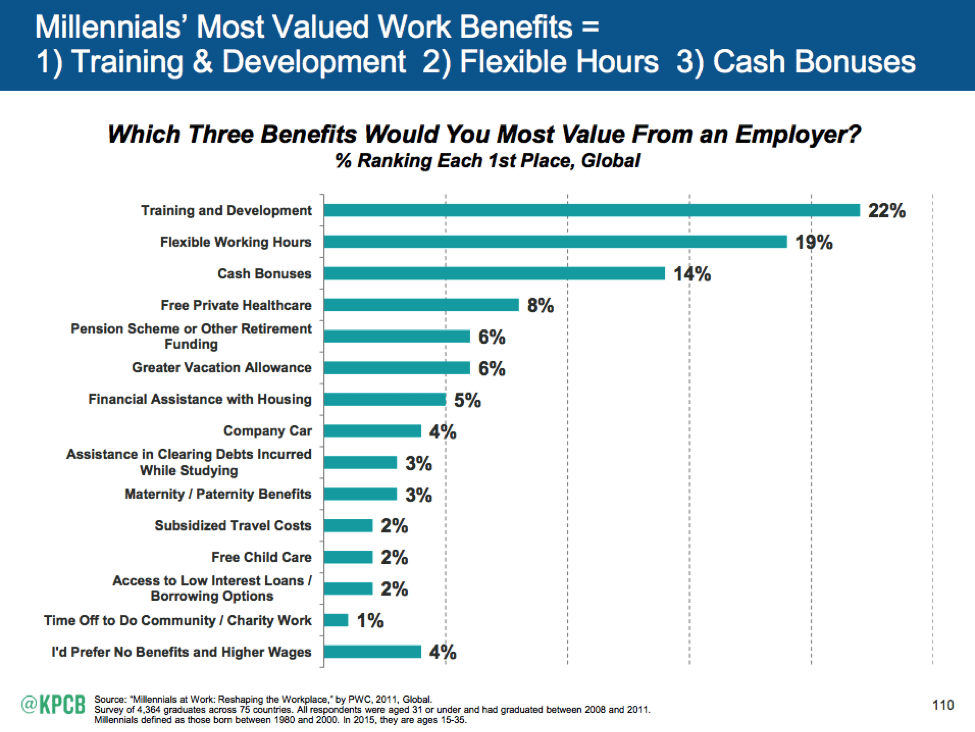What is enterprise learning for? To help employees learn.
That’s obvious, right? But in practice, many learning programs do more harm than good when it comes to inspiring learning. Common issues such as outdated course materials, mandatory classroom sessions, and restricted access to materials, are not unlike problems with the U.S. public school system that Seth Godin highlights in his popular TED Talk, “Stop Stealing Dreams.” The problems Godin identifies with public education are depressingly similar to ones that plague enterprise learning. His solution is to start by asking the right question: What is enterprise learning for?
In the past, enterprise learning was about compliance training. There was never any expectation that an employee would know what they were expected to do. Times have changed, though, and employees are hired based on their existing skills and ability to learn, not their capacity to follow instructions. Enterprise learning is no longer exclusively about training — it’s also about developing employees’ skillsets … right? If the goal for enterprise learning is to develop employees, then we need to seriously examine some of the techniques learning functions employ to achieve that mandate.
Learning is a powerful tool to empower people’s careers. Earning a college degree can lead to massive opportunities for those lucky enough to have access to the necessary funds and resources. However, once a student enters the workforce, it becomes almost impossible to pursue further education.
Work always seems to get in the way. Few organizations truly encourage employees to develop their careers via learning. They may create learning programs supposedly designed for professional development, but a lot of these initiatives are fundamentally flawed. For instance, the company might have a learning management system with thousands of courses — that nobody wants to take. Or, there might be a great manager development program available — that only certain employees can access.
The net effect is employees — especially younger ones — find themselves stuck in a job, when what they want is a career. Their learning department does little to encourage career growth. Instead, they reaffirm that employees need to fit in the box, sit in their chairs and pass the relevant quiz. Yikes.
Here’s an idea: Stop stealing careers.
Continuous development is already the new normal; it’s just not recognized. On the job, employees use YouTube to figure out new tools and Stack Exchange to share knowledge. On weekends, they take online classes. The resources are there, and motivated employees are taking advantage, but employers aren’t participating. Instead, employers focus on delivering specialized job training that ensures employees are compliant to established standards.
Don’t leaders want motivated employees? Given the choice, wouldn’t they prefer a self-starter who knows how to leverage YouTube for professional development and wants to pursue Coursera courses on project management? How do employees react when their manager tells them to focus on their work instead of offering time to learn new skills? First they laugh, then they disengage, then they leave.
Learning and development is the No.1 most valued benefit for millennials (Figure 1). Companies can’t afford to keep treating employees this way. Leaders need to think of employees as customers, and balance their needs against business needs.

Figure 1. Employees — Especially Young Ones — Want to Learn
So much for the idea that millennials aren’t interested in learning. (Source: KPCB Internet Trends, 2015)
Any time learning leaders design a learning program, they should ask — what’s the benefit to the employee? If the program isn’t doing at least two of the following things, rethink it:
- Lasting proof: Can the employee walk away from your company with evidence that they’ve learned?
- Recognition: Will the employee be formally recognized?
- Advancement: Can the employee use this learning to facilitate a promotion?
- Mobility: Will this increase the employee’s ability to transition to a new role?
Few learning programs can claim they are employee-driven without fulfilling at least a few of these requirements. Instead, most ask the employee to invest time learning in an area the employer wants them to understand, with no permanent recognition or advancement to go along with it.
Traditionally, learning and development is a cost center. Its new role is to be an employee advocate, to ensure career development happens. The business can then turn to L&D to:
- Attract top talent by providing evidence of development opportunities.
- Retain top talent by ensuring employees receive those opportunities.
- Identify candidates for internal promotions and career changes.
- Connect candidates with new roles by working with internal recruiters.
It’s time to set higher goals for enterprise learning. Stop stealing careers away from employees — invest in them. Offer career development programs that make continuous development accessible to everyone. Make it easy for employees to take advantage of the best education available, no matter where it’s offered, and reward them for their efforts with opportunities for advancement and internal mobility.
Encourage employees to share their learning with each other, and recognize them for doing so. Let them showcase their accomplishments with the world. If learning leaders create a culture of learning within their organization that encourages employees to take control of their own careers, they will be rewarded with employees who do exactly that.















